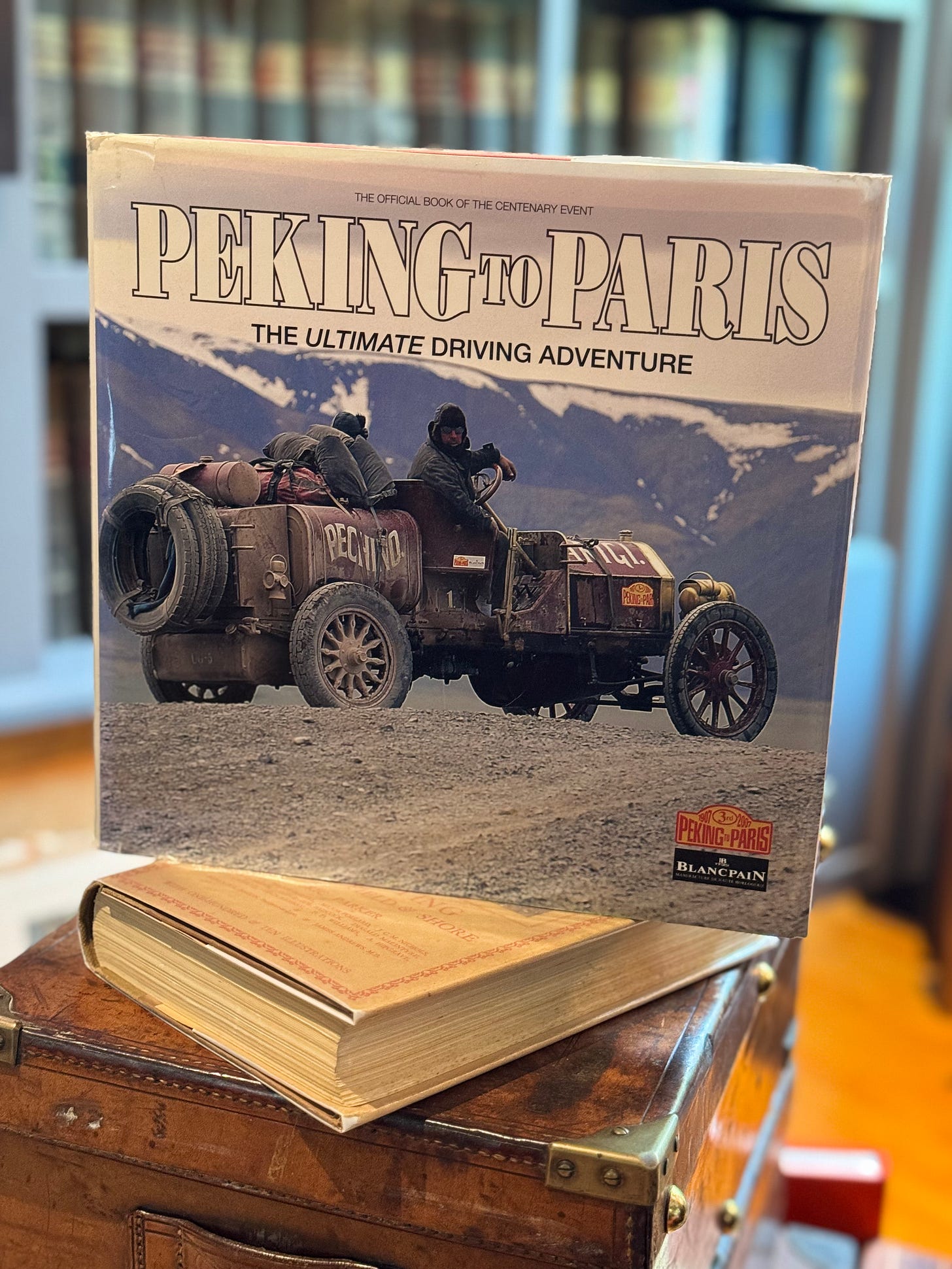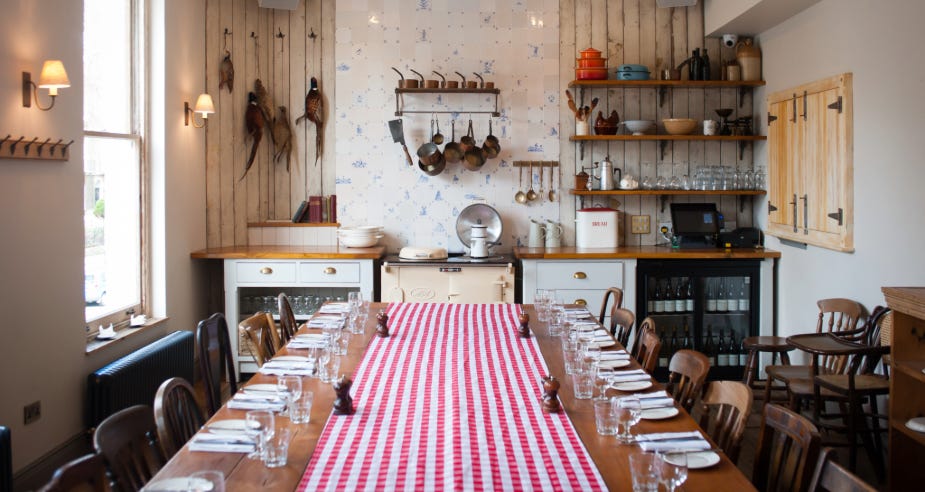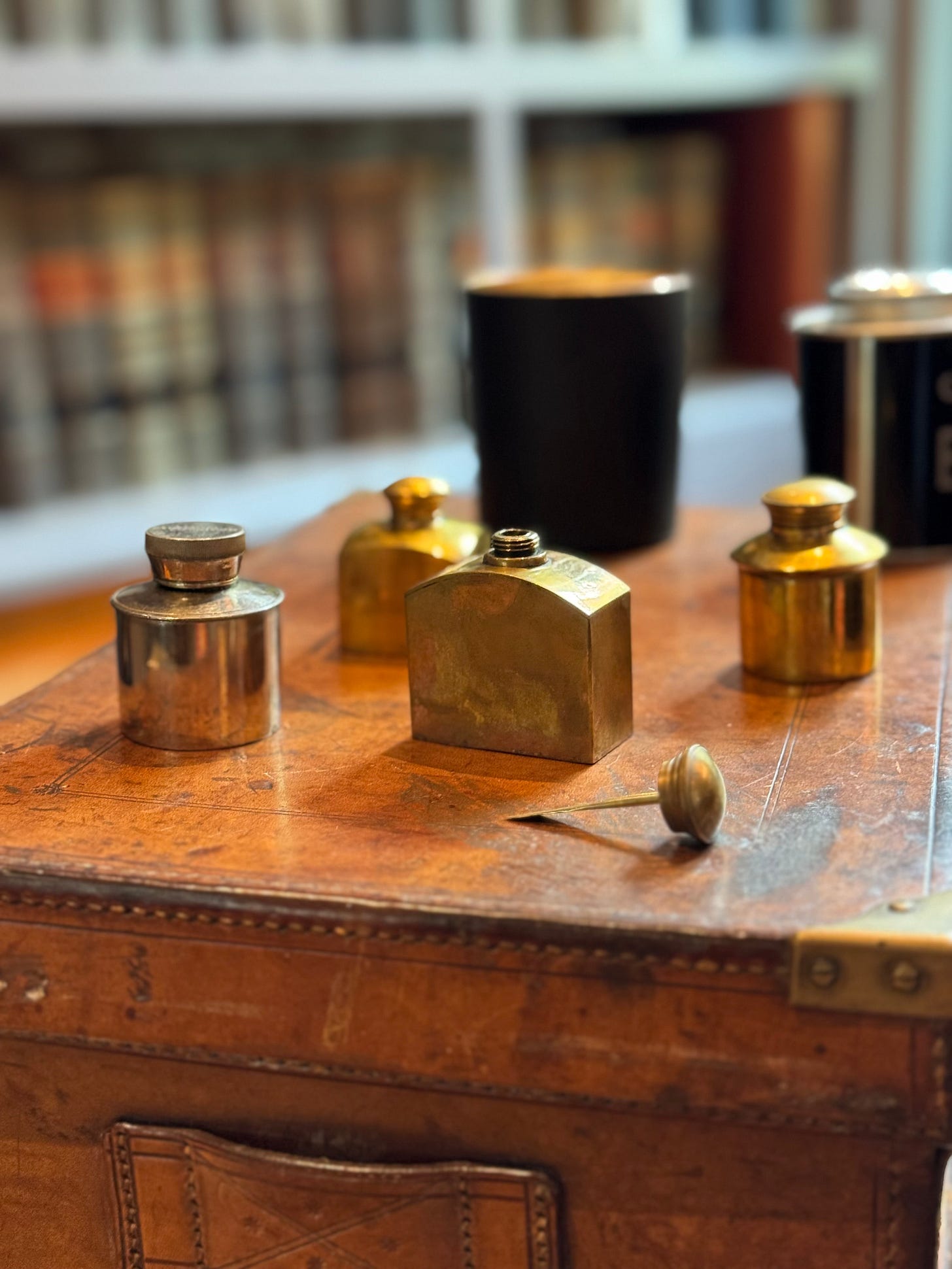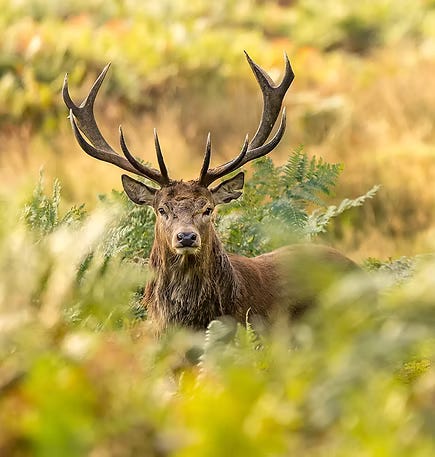The Old Swede: September 5, 2025
The World Beyond the Gunroom: a Friday dispatch where engines hum, roasts sizzle, guns gleam, and estates open their gates.
Off-Road Well
Peking to Paris: The Grandfather of All Road Rallies
In 1907, five intrepid teams left Peking (Beijing) in pursuit of something no one had yet dared, driving across continents to Paris in vehicles that were closer to farm equipment than touring cars. The winner, Prince Scipione Borghese in an Itala, arrived in Paris after 60 harrowing days, having conquered deserts, rivers, snowfields, and entire nations with barely any infrastructure.
The Peking to Paris Motor Challenge has since become the gold standard of vintage endurance rallies. In its modern form—revived by the Endurance Rally Association—drivers in pre-1976 cars brave thousands of miles of Mongolian steppe, Siberian taiga, and alpine passes. It's not just about speed; it’s about mechanical stamina, logistical cunning, and an unwavering appetite for adventure.
Land Rovers, Bentleys, Defenders, and Porsches have all taken their turn, often rebuilt with minimal electronics and maximum soul. For the modern sportsman who loves both wheels and wild terrain, Peking to Paris remains the Everest of overland challenges.
Suggested Read:
Peking to Paris: The Ultimate Driving Adventure by Philip Young
London Best
The Sunday Roast — Ritual, Family and Respect
Of all Britain’s culinary traditions, few rival the reverence of the Sunday Roast. Far from pub fare, the real roast dinner is a ceremony of restoration, beef (or sometimes pork, lamb, or pheasant), roasted until the juices bead on its crust, served alongside Yorkshire pudding, duck-fat potatoes, parsnips, and a ladle of real gravy.
In London, a handful of places still understand the gravity of the meal: Rules, Britain’s oldest restaurant, roasts aged rib with horseradish and suet. Hawksmoor plates pork belly with crackling like lacquered bark. Simpson’s -in-the-Strand, where the roast is carved from silver domes on rolling trolleys, evokes the Victorian table in full form.
The Sunday roast is not just sustenance, it’s a social anchor, a chance to reflect, argue, toast, and linger. For the gentleman coming in from the field, few things better accompany a bruised boot and a hungry spaniel.
Suggested Read:
Art & Ephemera
Ken Hunt: The Master of the Scroll and Feather
No modern gun engraver has shaped the face of fine British shotguns quite like Ken Hunt. Apprenticed at Holland & Holland and later crafting bespoke work for Purdey, Boss, and Westley Richards, Hunt is known for revolutionizing engraving with depth, detail, and daring.
Where once engraving was mere ornament, Hunt turned it into narrative, pheasants frozen mid-flight, hares dancing in barley, or regal scrolls that mimic Gothic tracery. He drew inspiration from medieval manuscripts, Renaissance etchings, and the British countryside itself. Many of his pieces bear the hallmark of his unique “carved and chiseled” style, where shadow and light play across the receiver like relief sculpture.
Collectors speak of Hunt’s engravings not as decoration but as art with lineage. His influence birthed a new generation of artists, like Phil Coggan and Paul Lantuch - yet Hunt’s early commissions remain the crown jewels.
One such piece, a Purdey 12-bore engraved with a full woodland hunting scene, sold in 2016 for over £240,000.

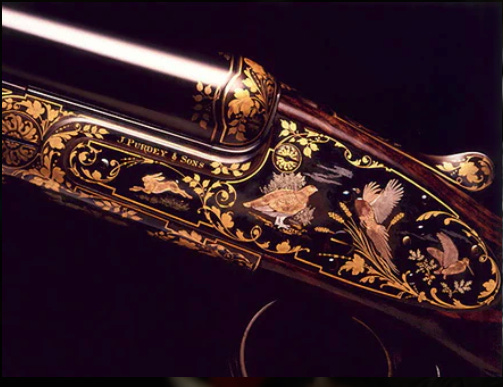

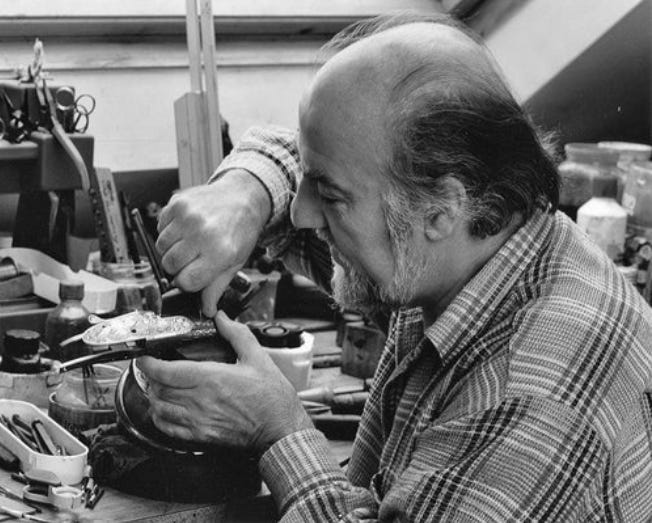
British Campaign Lore
The Gun Oil Can — Small Tool, Big Heritage
To the casual observer, a brass oil can is a minor accoutrement—perhaps a curiosity of the gun bench. But in reality, these little vessels represent a long-standing lineage of British gun care and field readiness.
Often flattened or domed, engraved with makers’ marks from Purdey, Boss, Rigby, or Trulock & Harris, these oil pots once came tucked inside bespoke cases. Their role was simple: to keep a fine gun oiled, clean, and operating in any weather. Whether stowed in a safari valise, moorland haversack, or trench coat pocket, the oil can became a symbol of preparedness and polish.
Collectors prize vintage examples, especially those stamped with crests or engraved with initials of storied sportsmen. Modern gunsmiths continue to make them, but the best still carry the weight of brass turned by hand, threads cut by file, and function built to last beyond a lifetime.
Suggested Read:
The British Sporting Gun & Rifle — Donald Dallas
Shooting Estate or Club Invitation
Logiealmond Estate — Highland Sport in the Heart of Perthshire
Set across 7,000 acres of rolling Highland Perthshire, Logiealmond Estate offers one of Scotland’s most immersive field experiences; grouse, partridge, and driven pheasant amid oak woodlands, heathered hills, and fast-running burns.
Sporting at Logiealmond is not about quantity, it’s about the quality of experience, where drives like Glenalmond and The Slopes challenge even the steadiest hand. Their fully guided days include loaders, dog teams, and shoot lunches worthy of the setting. A unique blend of estate-managed drives and walked-up options lets guests tailor their day to skill and style.
Accommodations range from the Georgian main house to beautifully restored stone cottages, each offering fireside whisky and warm hospitality. In autumn, the estate glows amber and rust, ripe for red deer stalking, trout fishing, and long days in the hills.
For the discerning sportsman, Logiealmond is a sanctuary of Scottish tradition, untouched by over-commercialization and tuned to the pulse of true field sport.



